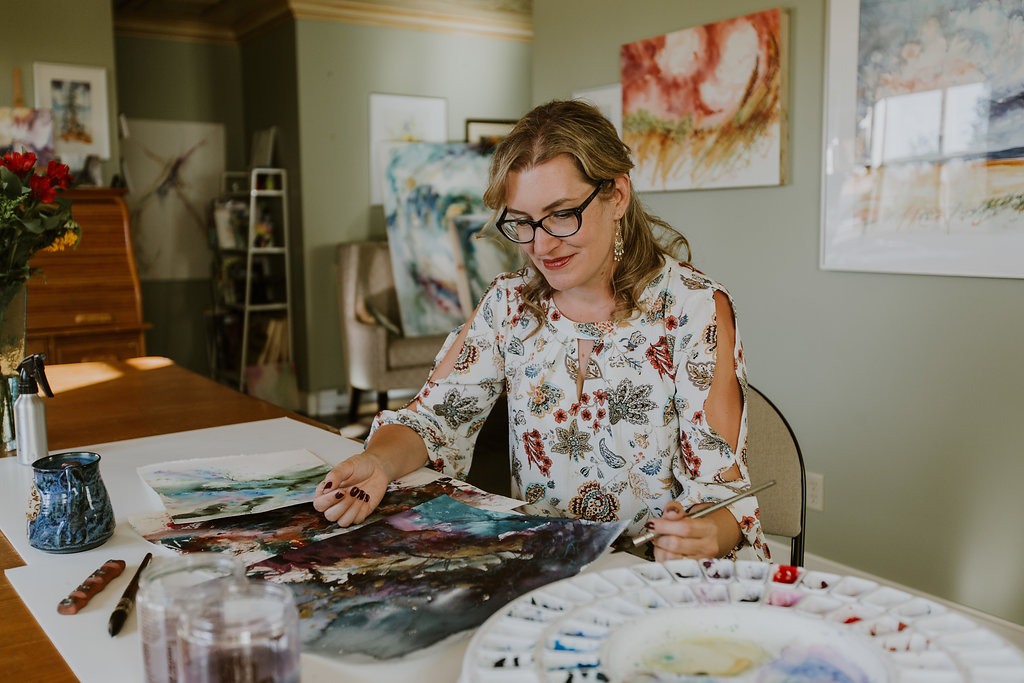How to Become a Loose Painter.
“Well, I guess I’m just not a loose painter.”
You’ve tried. You love the loose, intuitive style of watercolor artists like Jean Haines. You’ve followed tutorials and watched videos, but when you try to paint your own loose painting, you quickly fall into your usual habits. Detailed copywork of your reference photo, tight pencil sketches and muddy overworking seem to be an intrinsic part of your personal style, and you feel like it might just be the way it’s meant to be for you.
Realistic watercolor is beautiful, and it’s a wonderful evidence of skill in the medium. Loose watercolor also requires a high degree of technical skill, as so many quickly learn. What style is for you? Can you choose your style, and when should you give up on pursuing the style you yearn to make your own?
What is loose painting, anyhow?
When you say you want to paint “loose,” what do you mean? Often when we think of loose painting, we think of a particular artist known for an intuitive painting style, however, there are as many styles of loose painting as there are artists. “Loose” is always a relative term, but there is one thing that loose painting can never be, and that is derivative. Are you really a loose painter if you are copying another artist’s style?
Painting loosely means letting go. Letting go of “exactly” and aiming for “like.” Speaking in metaphors, word pictures that reveal the artist’s heart is at the core of a loose painting style, and finding your loose style is going to be a process of learning how to communicate from a place where words are not adequate.
Is loose out of reach of some artists?
If you’re yearning to paint loosely, is that reason enough to pursue that style? Is there a time when you should decide that a loose style isn’t for you and step aside from the pursuit?
Where is your heart? For me, painting loosely became the goal when I realized the deep satisfaction I found in wet-in-wet, first layer washes. Discovering Linda Kemp’s intuitive negative painting, and Jean Haines’ embrace of beautiful colour and flow struck a chord in me; I instinctively knew that these artists were listening to an inner voice that was also speaking inside of me, and their example gave me the courage to set out more assertively to find my own loose style, one that drank from deep inner springs of creativity.
Are you ignoring your heart’s yearning to do something more in your art? Is there a stage of the painting process that is more satisfying to you than others? Can you recognize that in that satisfaction lies the seeds of the artist you are meant to be?
Heart-led painting.
I started using the term “heart-led” or “intuitive” painting to describe the style of painting I’ve chosen. “Loose” just seems to fall short in really connecting the outcome to the process, and in heart-led painting, without the process, the outcome is unattainable.
You cannot paint intuitively if you aren’t listening to your intuition.
You can’t be heart-led if you don’t value the contributions gently prompted from your inner light. (I started writing “inner life” there but a typo changed the word to one that feels more apt. Thank you, creativity!)
You are the heart and soul of the art you create, and if you want to paint loosely, you need to welcome YOU into your art. Your quirky ideas, your missteps and digressions, your obsessions (I’ve spent years painting trees); from all of these come heart-singing inspirations.
Your own favorite artist.
I’ve said before that in painting as a heart-led artist, I get to be my own favorite artist. It is deeply and profoundly satisfying to paint the way my heart desires, without worrying about the label to put on my style, or whether anyone will approve of what I’m doing. I would never go back to the days when I was waiting for someone to tell me my art was good on their terms. I didn’t need to know what my style was to find it; I just needed to paint what brought me the most satisfaction.
Skill helps. It is much easier to paint your heart when you have the technical ability to anticipate what the paint will do, and to manipulate what is happening on the paper. Skill gets built through brush miles and patience persistence.
Faith and trust are the other side of the coin. Believing you have something inside worth sharing, being brave enough to mine for it and trusting that you will be the artist you were meant to be if you are true to you and don’t give up.
We get to change the world.
I get very emotional when I imagine a world in which every person chose the route of passionately pursuing fulfillment of the deepest yearnings of the heart. Courageously living as you were intended to live. The artists who paint with this kind of authentic vulnerability are the ones who inspire us. Two of these artists gave me wings seven years ago, and more than my paintings, my life was changed forever.
I created my Fearless Artist email series to encourage you as you chart your course as a courageous, heart-led artist. Sign up for the inspirational free series below.




